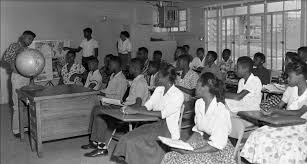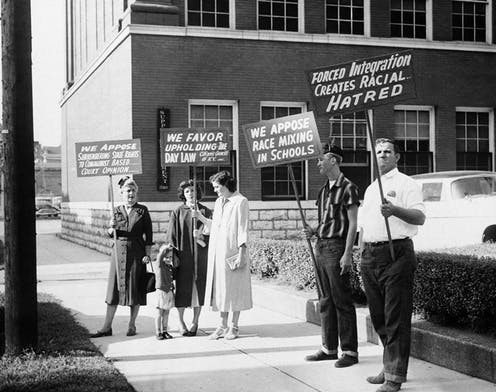What if Phoenix had an Africentric School?By Constance SalasOctober 15, 2019
What if Phoenix had an Africentric School?
By Constance Salas
October 15, 2019

Slide title
Write your caption hereButton
Slide title
Write your caption hereButton
‘’’’During the late 1930s, the American Council on Education sent a team of investigators into the Deep South to conduct a survey of the schools in which black children were educated. These schools were, of course, segregated by law and long-standing custom. The report of the investigators who visited the black grade school in Dine Hollow, Ala., reflected the study's findings across the "Black Belt" that stretched from southern Virginia through eastern Texas:
A typical rural Negro school is at Dine Hollow. It is in a dilapidated building, once whitewashed, standing in a rocky field unfit for cultivation. Dust-covered weeds spread a carpet all around, except for an uneven, bare area on one side that looks like a ball field. Behind the school is a small building with a broken, sagging door. As we approach, a nervous, middle-aged woman comes to the door of the school. She greets us in a discouraged voice marked by a speech impediment. Escorted inside, we observe that the broken benches are crowded to three times their normal capacity. Only a few battered books are in sight, and we look in vain for maps or charts. We learn that four grades are assembled here. The weary teacher agrees to permit us to remain while she proceeds with the instruction. She goes to the blackboard and writes an assignment for the first two grades to do while she conducts spelling and word drills for the third and fourth grades. This is the assignment:
Write your name ten times.
Draw an dog, an cat, an rat, an boot.”
(courtesy of Aft.org, “Jim Crow’s Schools”, Peter Iron’s)
Integration was not the answer to segregation, Black children are discriminated against in the classroom of integrated schools on a regular basis. The solution to the low graduation rate of African American children in Phoenix and discrimination is the implementation of an Africentric school with an early college program, The Columbus Africentric Early College is an exemplary example of how implementing an Africentric school could enhance the education of children of African descent in the city of Phoenix.The school was founded by a school teacher named Charles Tennant. In 1967, he was in a jet on his way to Detroit from North Carolina to interview for a teaching position. The jet had mechanical problems that caused Mr. Tennant to miss his job interview and become stranded. He picked up the telephone book and landed a job according to the Columbus Dispatch Newspaper. He first proposed the school in 1993. The first Columbus Africentric school was located in an old building that was Mohawk Middle School. In order for students to attend they had to enter a lottery at the Columbus Public School District office. Parents and students were ecstatic when the opened the mail and found that they had been accepted to the school that had a curriculum based on African History. The discipline is based on the principals of Nguzo Saba and Ma’at.
The Columbus Africentric Early College High School is 139,400 square feet. “In the academic areas, clusters of classrooms are built around common spaces, where students can congregate and sit on small, high-backed sofas or at tables. Walls dividing the pods roll open to create larger, flexible spaces.” (Columbus Dispatch)
Can you imagine having an Africentric school of this magnitude in Phoenix, Arizona? The amount of African American children graduating and receiving degrees would definitely rise. The amount of African American children dropping out of school would decrease tremendously due to less exposure to a covertly hostile learning environment.
Universal Cellphone & Repair.
Show Us Your Crack...We'll Fix It!
Free Cellphone Case & Screen/Glass Protector With Every Screen Repair
We have Chargers, Screen Protectors, Phone Cases and EarPods
Copyright © 2023, Urban AZ News Journal INC, Powered by Digital SEO INC.












